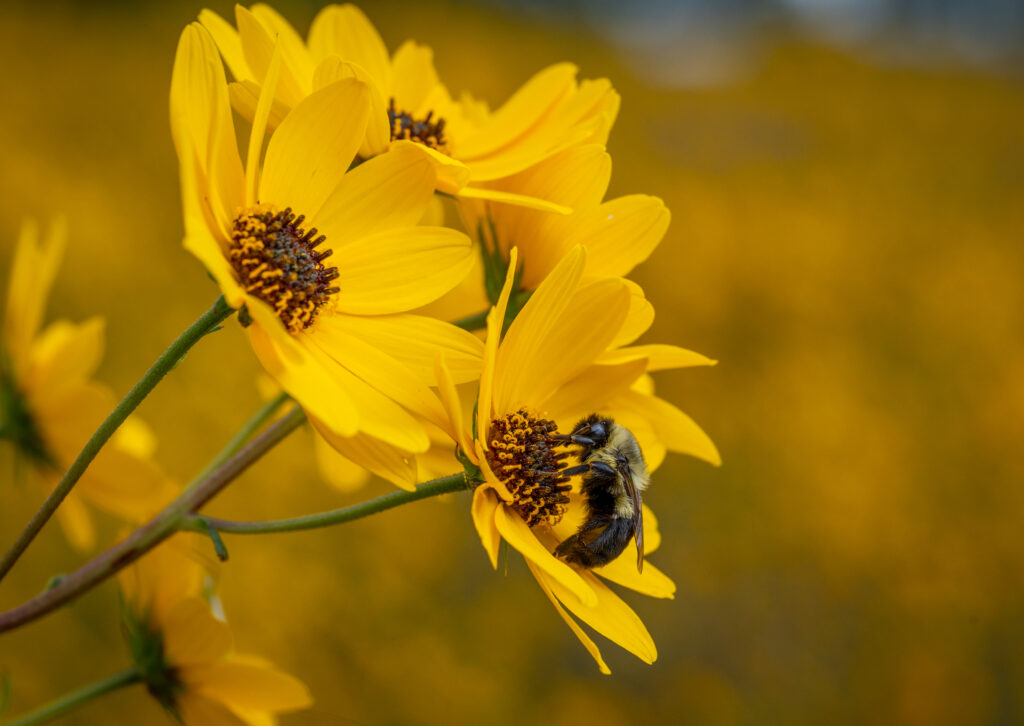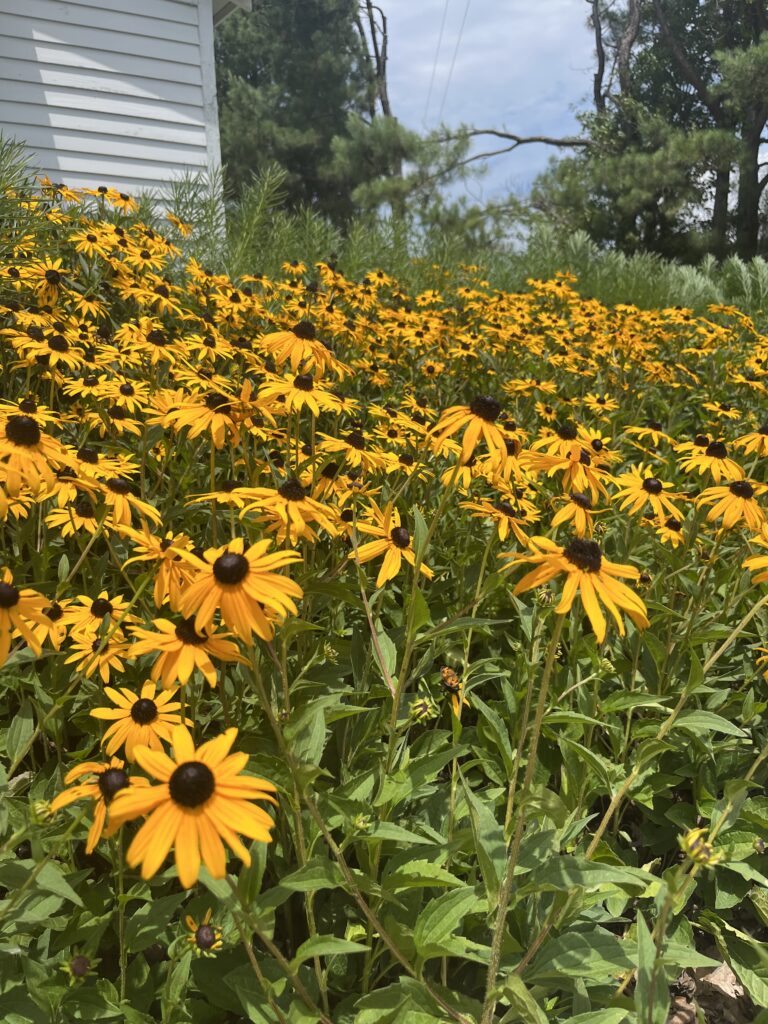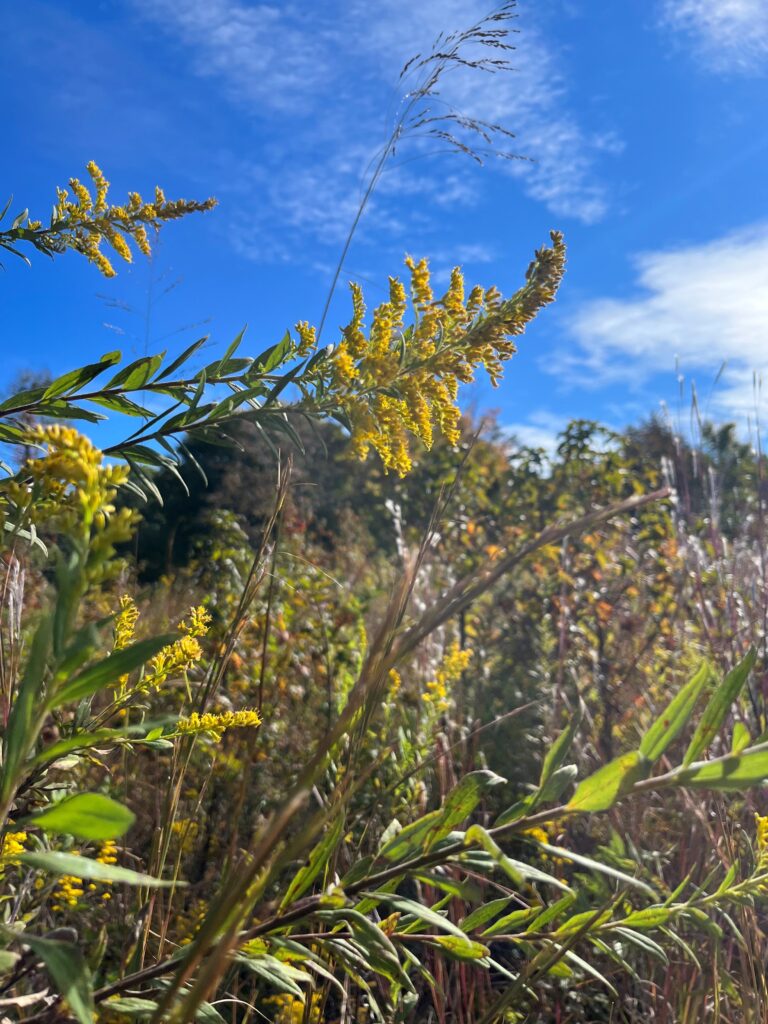By Laura Warman, Grants Manager

September is here, and whether you go by meteorological autumn (which runs from September 1 to November 30) or astronomical fall (which will start on the autumnal equinox on September 23), it is safe to say that the autumnal aster season has definitely begun!
The Asteraceae, previously known as Compositae, is one of the largest families of flowering plants with over 1,600 genera and 2,500 species distributed pretty much everywhere on the plant except Antarctica (although they used to live there too). They are thought to make up about 10% of all flowering species – which means that there are a lot of asters out there! This is the family that contains daisies, dandelions, sunflowers, dahlias, eponymous asters, and marigolds. I would wager that as you are reading this, you have a pretty good idea about what typical Aster family “flowers” look like. As their old name alluded to, each composite “flower” is actually an inflorescence, or clusters of up to hundreds of individual flowers, and what we tend to think of as petals are colorful bracts held up by the outermost ring of florets.
People have had a close relationship with plants in the daisy family for a long time as some have been cultivated for thousands of years and many are edible or medicinal. Some familiar edibles in this family even include lettuce, artichokes, chickory, and chamomile! There are also some fairly wild daisy relatives, like the treelike silverswords in Hawai’i, or their South American cousins the Espeletias.
Closer to home, there are many native asters to be found in the Piedmont. This includes the wide assortment of fleabanes (Erigeron spp.) and yarrows (Achillea spp.) that bloom in the spring, and others that start or keep flowering through the summer like the tickseeds (Coreopsis spp.), coneflowers (Echinacea spp.) and rudbeckias (Rudbeckia spp.). Late summer and fall are when many asters put on their best show- while they are beautiful and feed pollinators throughout the year, now is the time when other blooms start to fade away and we can see so many asters going into their peak season. Personally, when I see yellow start to peak through the goldenrods (Solidago spp.), I know the change of seasons is near. Also- while many fall allergies have been falsely attributed to goldenrod – whose pollen you are most likely not actually allergic to- the blame lies on another aster- the ragweeds (ironically, in the genus Ambrosia) whose pollen is much, much smaller. Now is also the time for the bright yellow rosinweeds (Silphium spp.) and swamp sunflowers (Helianthus angustifolius) to shine- often 5-10 feet above the ground! Lest you think all asters are yellow, though- don’t forget about the blazing stars (Liatris spp.) and ironweeds (Vernonia spp.), that tend to range from white and pink to an array of deep purples.
Another clear harbinger of aster season is the sudden arrival of chrysanthemums (Chrysanthemum spp.) in supermarkets all across the region. While they are cheery harbingers of fall, mums are mostly hybrids derived from Asian species and not native. I find climbing asters (Ampelaster carolinianus) to be much cheerier, longer-lasting, perennial, and almost certainly easier to care for. I haven’t watered mine in two years, but it’s currently happily getting ready to bloom, and once it starts it will go well into November- outlasting any other blooms in my garden. One of my favorite parts of aster season is catching sight of a field or meadow ablaze with wild blooms catching the fading sun. I feel like nothing else quite catches the feeling of the end of summer quite so perfectly. I highly recommend taking a hike out at one of our preserves and trying to count how many different asters you can find!


